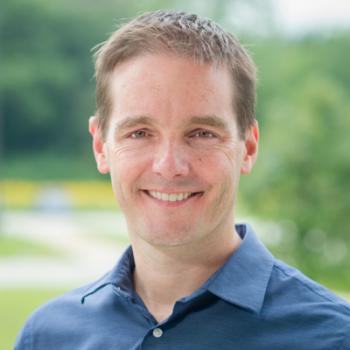Biography
Jeffrey Guest explores electronic, magnetic, optical properties of matter on nanometer length scales using ultrahigh vacuum scanning probe microscopy and ‘single particle’ laser spectroscopy techniques. He also studies and develops new ways of measuring and controlling mechanical motion of nanofabricated and self-assembled nanoscale systems.
Guest joined the Center for Nanoscale Materials (CNM) in the Nanoscience and Technology Division in 2007. He joined Argonne in 2004 as the Arthur Holly Compton postdoctoral fellow in the Physics Division, where he demonstrated laser-cooling and trapping of radium atoms for the first time as a first step towards a measurement of their electric dipole moment (a signature of time-reversal violating interactions).
In his current experimental work at the CNM, he is interested in understanding and controlling the electronic, magnetic, optical and quantum coherence properties of molecular and nanoscale systems. These properties are largely determined by structure and environment at the atomic scale. In order to control and characterize these nanoscale systems at these length scales, he is combining low temperature ultra-high-vacuum scanning probe microscopy (LT UHV SPM) and confocal optical microscopy and spectroscopy to explore single atoms or molecules, self-assembled molecular heterojunctions, photocatalytic surfaces, and quantum defects in 2D materials. He is particularly interested in (i) photophysics of molecular acceptor-donor complexes and defected surfaces, (ii) nanoplasmonics and tip-enhanced laser spectroscopies, and (iii) the limits of electronic, spin, and optical quantum coherence in nanoscale systems at surfaces.
Jeffrey has also been developing new approaches to measuring and controlling nanomechanical motion in nanofabricated and self-assembled systems. Using interferometric laser microscopy techniques, he has studied mechanical dynamics of membranes self-assembled from functional nanoparticles and nonlinear dynamics in nanofabricated structures. He is also developing new techniques to drive and measure the high frequency vibrations of the nanoparticles themselves. These approaches may open new doors to coupling the intrinsic functionality of nanoparticles and nanoscale systems to mechanical motion, providing new opportunities in sensing and control.
Education
- Ph.D., Applied Physics, University of Michigan, 2000
- B.S.E., Mechanical/Aerospace Engineering, Engineering Physics, Princeton University, 1993
Awards, Honors & Memberships
- Arthur Holly Compton Fellowship, Argonne National Laboratory (2004–2007)
Publications & Patents
- Author of more than 50 refereed publications and 3 patents. Selected publications here.
